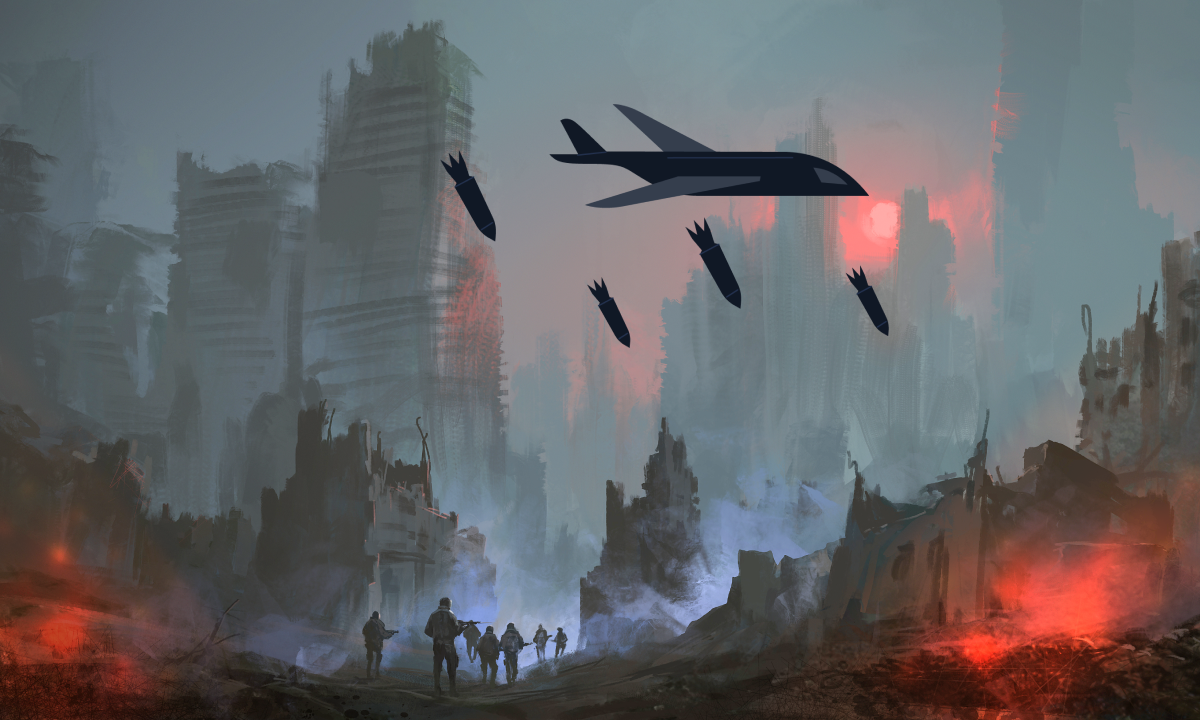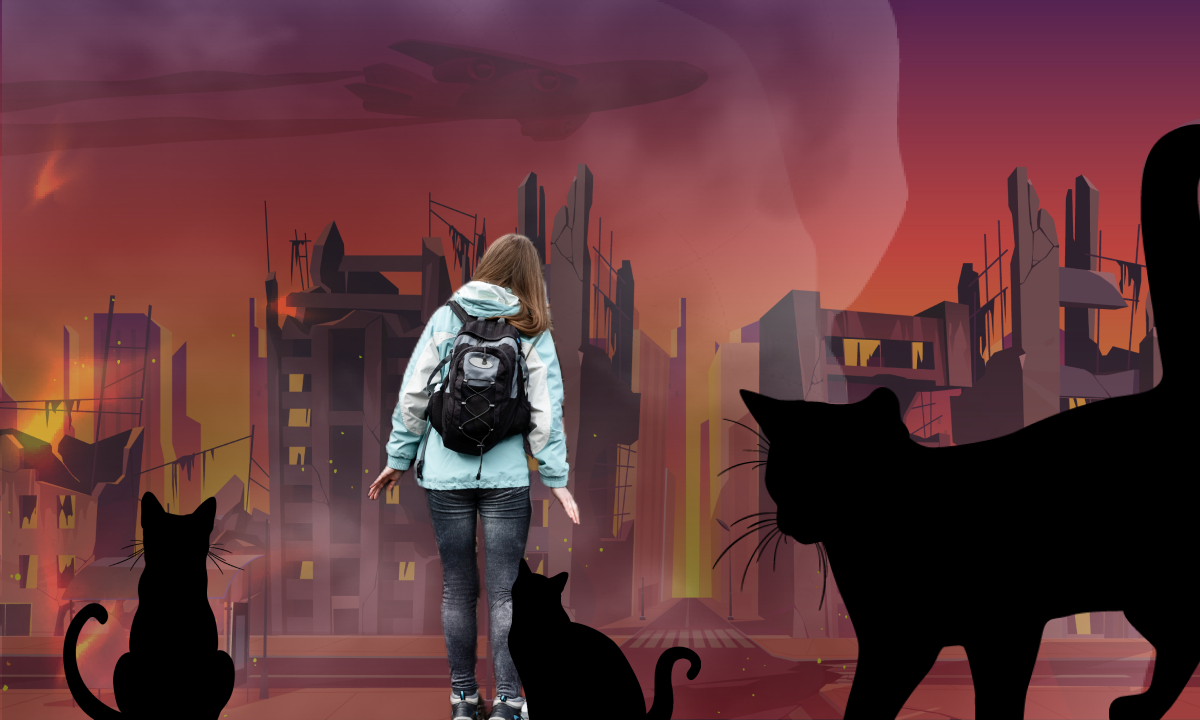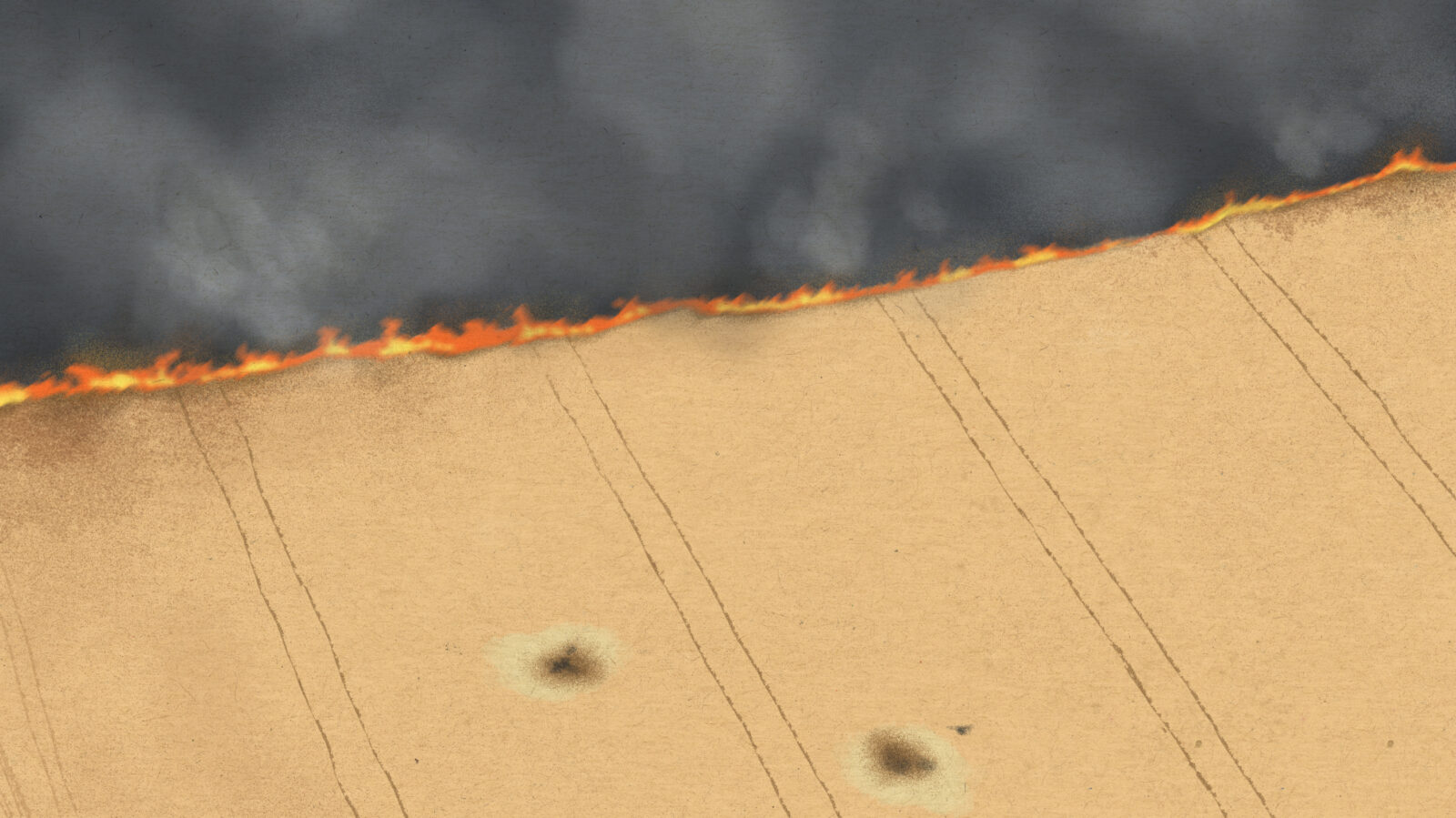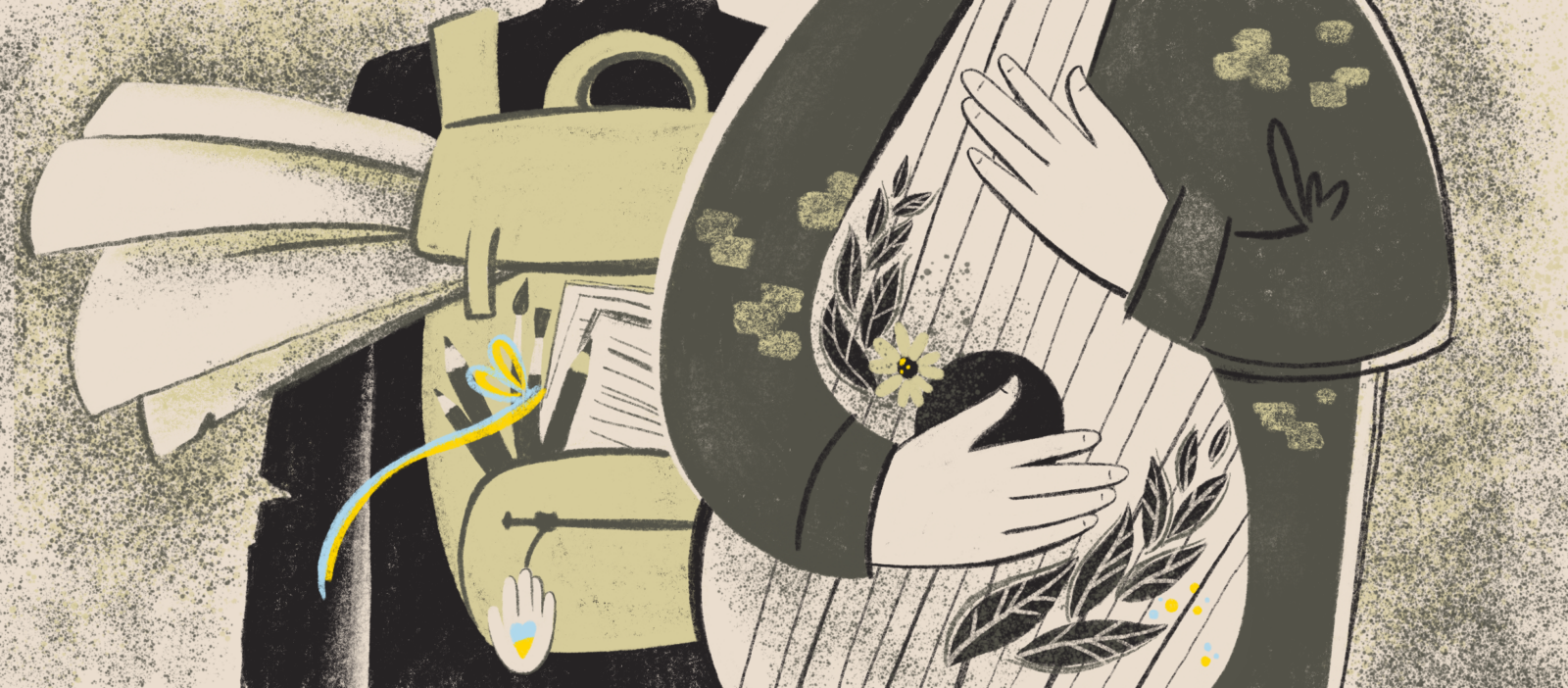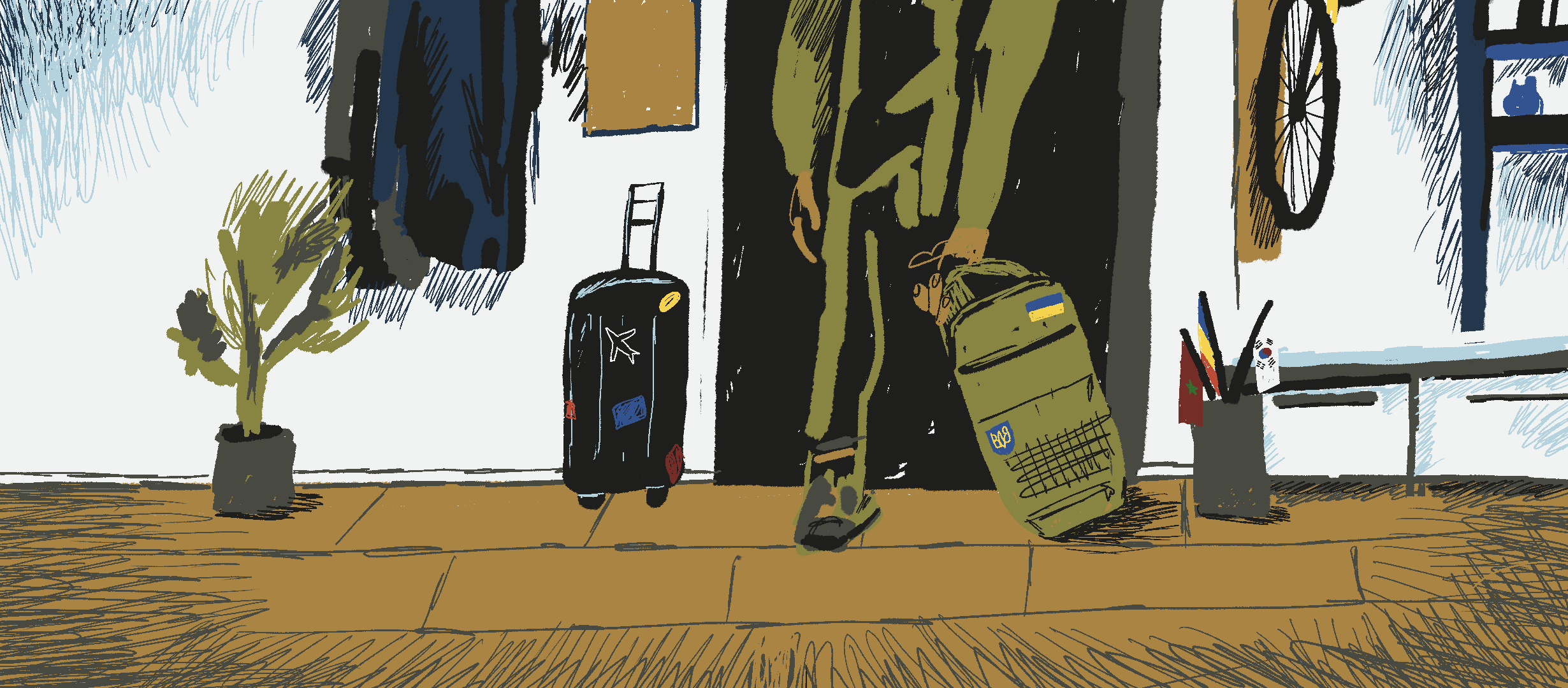Natasha (Nata) Nahayevska is 23. She’s an art manager, critic and co-curator of the Garage-33 gallery. She grew up in the historic city of Bar, Vinnytsia region. In Kyiv, she works with the sculptor Maria Kulikovska, who moved there after the occupation of Crimea.
In the evening of February 23, Nata came from Vinnytsia to Kyiv—to meet famous sculptors. In early April, the girl was going to coordinate an exhibition involving the Society of Sculptors. At 11 a.m., her colleagues were to discuss the concept at the Mytets Gallery on Lva Tolstoho Square. To consider whether the gallery space would suit their needs. To reflect on how to put the idea into practice.
The war broke out in a couple of hours.
“I was woken up at around half past four by explosions in Brovary. The entire sky here, in Vyshhorod, was red because of them. At 8 a.m., sculptor Petro Hronsky called. He said that the meeting, no doubt, had been canceled and everything would be put off indefinitely. We wished each other strength and glory to Ukraine!”
The first minutes were an emotional roller-coaster.
“It was disorientation at first. You couldn’t figure out how close it blew up. You had no idea what to do and where to run. Next, it was fear, attempts to hold back tears, confusion, obscene language. Yet focus, determination in actions, control over emotions came eventually. And they are still coming.”
Nata stays with her mom’s brother’s family in Vyshhorod. She is escaping the gloomy reality by working on her own “frontline,” helping Maria Kulykovska with actions to support Ukrainian artists and galleries. She tried to keep a diary.
“The quiet in Vyshhorod is frightening. In the entire time, there were only two sirens. At night, windows are lit up in many flats, so there are some people. People are calm, there are cars on the street. During the first two days and especially today, explosions have been heard clearly, coming from Bucha, Hostomel, Irpin. Still, it’s extremely hard to get to Kyiv as there is some fighting taking place ahead.”
Within a week of Russian aggression the girl has developed a fear of ravens who remind her of bombs. Her hearing has sharpened. She started to hear every rustle, barking, knocking and thudding.
“Now I get why, after 2014, we were asked not to light fireworks. Now I realize that when all of this is over, I wouldn’t be able to live in a world where people shoot fireworks. All feelings and anxieties have escalated. However, hope doesn’t vanish.”
In the early days of the war leaving Vyshhorod was almost impossible. Natasha didn’t want to get stuck in the panicking traffic. Now she waits for a car from Vinnytsia so she can go home. She’s eager to reunite with her family, and, despite invitations, doesn’t plan to go abroad. Transportation hasn’t been able to make it to her for more than two days.
“With this war, I realized that, really, we plan, God laughs. I plan, as soon as all of this calms down more or less, to raise the Ukrainian spirit, art… This is something I can do. I have rethought and got to see again how much I love my loved ones and how much I want our culture to develop after this war. I think Europe will open some paths for us. People are interested in us already. We’ll take this chance.”





